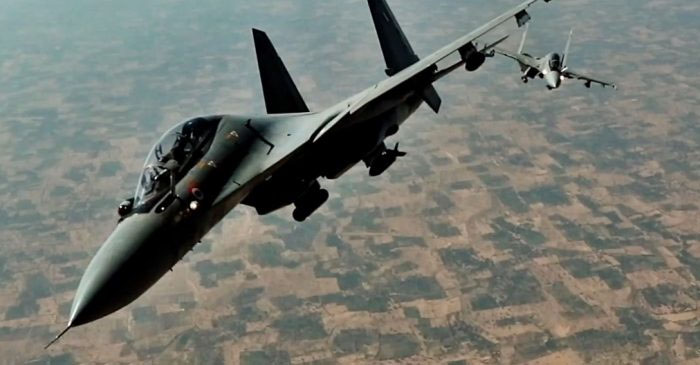PAF Official Explains Why Pakistan Could Not Intercept Indian Mirage 2000 Jets During Balakot Bombings
March 3, 2021
On February 26, 2019, the Indian Air Force’s Mirage 2000 jets crossed the Line of Control (LoC), releasing five Israeli-made Spice 2000 bombs 15 km into the Pakistan-administered Kashmir.
The Mirage 2000 aircraft struck the Jaish-e-Mohammed camp in Balakot in Pakistan’s territory, where terrorists were reportedly hiding, and came back to their bases in an operation lasting about 21 minutes.
It was the first time in more than 40 years that Indian fighter aircraft had crossed the de facto border dividing the disputed territory of Kashmir. India called the strikes a “non-military pre-emptive action”, against a training camp for the Jaish-e-Mohammad in Balakot.
Pakistan denied the airstrikes had caused any casualties, saying the Indian bombs had hit a largely empty hillside.

The location of the target of the Balakot airstrikes.
On the following day, multiple Pakistani aircraft entered Indian territory dropping multiple payloads, which India said, was an attempt to target military installations.
The incoming jets were engaged by India’s MiG fighters, one of which was flown by Wing Commander Abhinandan Varthaman, whose plane crossed into Pakistan-controlled Kashmir and was shot down.
One question which is still discussed with much curiosity even two years after the event is how the Indian jets managed to escape after dropping their payloads in a territory deep inside Pakistan.
The 16 Indian aircraft had managed to cross 15 km into Balakot, dropping Israeli-made Spice 2000 bombs on a terrorist camp.
According to Air Marshal Masood Akhtar (retd), Pakistan Air Force (PAF), the air forces on both sides may have been instructed not to engage each other.
“That is why the Pakistani planes forced them to return instead of trying to shoot them down, while the Indian planes also did not face the Pakistani planes, dropped the payloads and left quickly,” he told BBC.
If there is a high alert and the planes are patrolling, then it takes no time to retaliate. If the plane is on the ground and the pilot is in the cockpit, the plane will be in the air in the next three minutes, he added.
“If the pilot is on an air defense alert area, it takes five minutes to reach the plane, land in the cockpit, and soar.”
The former Pakistani Air Marshal said that during Balakot, the air force was already on a high alert and the Pakistani fighters may have reached them in time. But since the orders may have been to only chase the intruding aircraft back into Indian territory, they were not shot down, he maintained.
Since the Pulwama attack on February 14, 2019, Pakistan had already been on a high alert and expecting retaliation after growing anger in India over the deaths of over 40 CRPF personnel in the bomb attack.
The Indian perspective
However, the then Air Marshal Hari Kumar, under whose command the Balakot airstrikes took place, told ThePrint that the reason the Indian fighter jets executed the strike successfully and came back was because of a premeditated plan that had worked as they wanted to.
“When the Mirages were nearing the LoC, the Pakistani SAAB AWACS, which was in the air, seemed to have picked up the fighters and two Pakistani aircraft were scrambled,” he said.
Kumar says that at that time, a group of Jaguars in the Rajasthan sector was ordered to move towards the border, which gave the false impression to the Pakistani Air Force that the intrusion was happening near Bahawalpur in Pakistan. As a result, the Pakistani AWACS, along with the scrambled jets, moved to that location.
“It was at this moment when the Mirages entered and did their job well,” former Air Marshal Kumar told ThePrint.
He added that while Pakistan was expecting an airstrike, India tried to create an impression that the target was probably going to be Bahawalpur, which houses the headquarters of the Jaish E Mohammed. The strategy had worked.
Although it has been more than two years since the airstrikes, the two countries continue to assert their own versions of the events as they unfolded. While India claims that the airstrikes had hit the target in Balakot and shot down a Pakistani F-16 fighter in the dogfight which happened on the following day, Pakistan denies both the claims.
The air forces of both the countries have since then worked to strengthen their combat fleets with India acquiring the French Rafale jets and Pakistan inducting new fleets of JF-17 Block-3 fighter jets.
Courtesy: Eurasian Times

